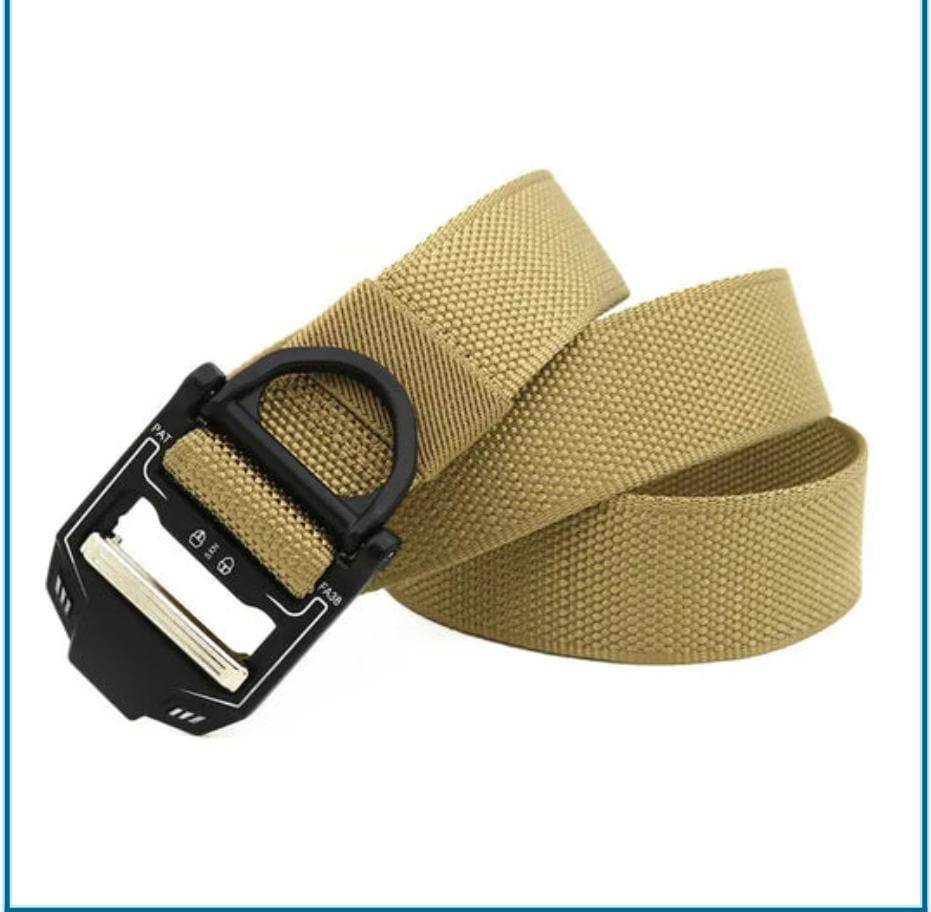Introduction
The tactical gear industry is known for producing high-quality, rugged equipment designed to withstand the harshest conditions. While durability and functionality have always been the top priorities, there's a growing emphasis on sustainability in the manufacturing of tactical belts and accessories. This article examines the eco-friendly materials and sustainable practices that are making their way into the production of tactical belts, catering to the rising demand for gear that not only performs well but also aligns with environmental responsibility.
The Call for Sustainability in Tactical Gear
The demand for sustainability in tactical gear is a reflection of broader global concerns about climate change and environmental degradation. Just as in other industries, consumers and manufacturers in the tactical gear space are beginning to acknowledge their role in promoting a more sustainable future. Here are some of the reasons for this shift:
Environmental Awareness: Increasing awareness of environmental issues has led to a more informed and environmentally conscious consumer base that seeks products that align with their values.
Regulatory Pressures: Governments and regulatory bodies are implementing stricter environmental standards and encouraging companies to reduce their ecological footprint.
Ethical Considerations: Many consumers and manufacturers are increasingly considering the ethical and social implications of their choices, including how products are sourced and manufactured.
Cost Savings: Sustainable practices, such as reducing waste and energy consumption, can lead to cost savings for manufacturers, making sustainability a pragmatic choice.
Sustainability in Tactical Gear: Focus on Tactical Belts
Tactical belts are an integral component of a complete gear setup, often serving as the backbone for carrying essential equipment. The sustainable shift in tactical belts encompasses materials and manufacturing processes. Let's delve into these aspects:
Eco-Friendly Materials for Tactical Belts:
Recycled Nylon: Manufacturers are increasingly using recycled nylon for the webbing in tactical belts. This reduces the environmental impact of manufacturing while maintaining durability.
Organic Cotton: In some cases, organic cotton is being incorporated into tactical belts, providing a sustainable alternative to synthetic materials.
Hemp Blends: Hemp is an eco-friendly material known for its sustainability. Hemp blends in tactical belts offer strength and durability while being a renewable resource.
Cordura Eco-Fabric: Cordura has developed eco-friendly fabric options made from recycled materials, offering the same durability and abrasion resistance as traditional Cordura.
Sustainable Practices in Manufacturing Tactical Belts:
Reduced Waste: Manufacturers are implementing practices to minimize waste in production, such as optimizing material cutting processes to use as much of the material as possible.
Energy-Efficient Manufacturing: Energy-efficient machinery and practices, including the use of solar or wind power, help reduce the carbon footprint of tactical belt production.
Water Conservation: Reducing water usage in manufacturing through recycling and efficient water treatment is a critical aspect of sustainable practices.
Responsible Sourcing: Ethical and sustainable sourcing of materials is becoming more common, ensuring that materials are harvested or produced in environmentally friendly ways.
Recycling Programs: Some manufacturers are implementing recycling programs that allow customers to return old or worn-out gear for recycling and repurposing.
Eco-Friendly Tactical Accessories
Sustainability isn't limited to the tactical belts themselves; it extends to the accessories that users attach to these belts:
Eco-Friendly Holsters: Manufacturers are developing holsters made from sustainable materials like recycled polymers, contributing to reducing the ecological footprint of concealed carry setups.
Sustainable Pouches and Attachments: Pouches and attachments designed to fit on tactical belts are increasingly made from eco-friendly materials or feature sustainable designs.
Recycled Hardware: Even the buckles, clips, and hardware on tactical belts and accessories are being designed with recycled or sustainable materials.
Benefits of Sustainable Tactical Belts and Accessories
The adoption of sustainability in the production of tactical belts and accessories brings several benefits, not only for the environment but also for consumers and manufacturers:
Environmental Responsibility: The use of eco-friendly materials and sustainable practices reduces the negative impact of tactical gear production on the environment.
Durability: Sustainable materials can be just as durable and long-lasting as traditional materials, ensuring that the gear serves its purpose for an extended period.
Cost-Efficiency: Over time, sustainable practices can lead to cost savings for manufacturers, which may, in turn, lead to more affordable options for consumers.
Customer Appeal: Products that promote sustainability resonate with environmentally conscious consumers, potentially increasing brand loyalty.
Compliance with Regulations: Adhering to sustainability standards and regulations can ensure manufacturers are in compliance with evolving environmental laws.
Challenges in Sustainable Tactical Gear
While the shift towards sustainability in tactical gear is promising, it comes with its own set of challenges:
Cost of Sustainable Materials: Eco-friendly materials can be more expensive than traditional ones, potentially leading to higher product prices.
Supply Chain Complexity: Sourcing sustainable materials and ensuring they meet the necessary quality standards can be challenging.
Balancing Sustainability and Functionality: Striking the right balance between sustainability and performance is crucial, as tactical gear must meet stringent functional requirements.
Consumer Education: Consumers need to be educated about the environmental impact of their choices and the value of sustainable gear.
Conclusion
The inclusion of sustainability in the manufacturing of BeltBuy tactical belts and accessories represents a positive evolution in the tactical gear industry. This shift not only promotes environmental responsibility but also ensures that consumers have access to high-quality, long-lasting gear. While challenges exist, the growing demand for eco-friendly tactical gear is a testament to the collective commitment to reducing the environmental impact of the industry. The adoption of sustainable practices in tactical gear serves as a beacon of hope, demonstrating that even in sectors known for their ruggedness and durability, there is room for a greener, more responsible future.


